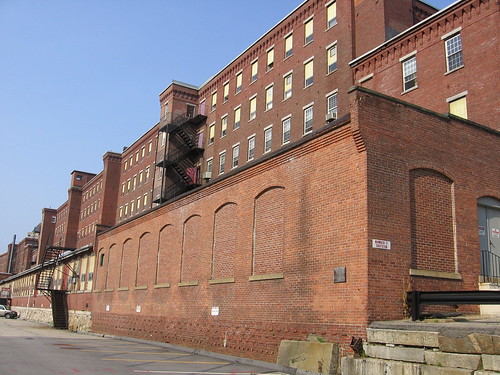i'd like to see west remain a high school, it's got great character
West's future debated
By RILEY YATES
Union Leader Staff
Manchester ? A committee will within a month recommend two options for addressing West High School's future as Bedford students leave, a key step toward a makeover that could vastly change the school.
A myriad of proposals remains on the table, including plans to redistrict, expand programs such as performing arts or engineering, or add seventh and eight graders now attending the Middle School at Parkside.
Several members of the Committee to Study West's Future said no consensus has been reached over which plans will make it to Superintendent Michael Ludwell's desk, despite an October deadline for submitting a report.
"There's a number of scenarios that are still out there," said Assistant Superintendent Frank Bass, the co-chairman of the 19-member committee. "There have been no conclusions."
Two final meetings of the committee are scheduled next month on Sept. 13 and Sept. 27. The Manchester school board will have final say over the two recommendations, once they are reviewed by Ludwell.
At the most recent panel on West, four subcommittees presented different plans for the future of the school, which is losing nearly 40 percent of its students with Bedford's decision to build its own high school.
One proposal calls for a shift across West Side schools in Manchester, with West High including seventh and eighth graders and Parkside operating as an upper elementary school serving grades four through six.
Gossler Park School would become a lower elementary school that houses kindergarten through third grade.
The shuffling would ease overcrowding at Northwest Elementary School and allow the three schools to take on Manchester Development Preschool, which is eventually losing the lease for its home on Auburn Street, Bass said.
Redistricting could include shifting Hooksett children now at Central High School over to West. But it also might involve plucking Central students regardless of town, or moving students from both Central and Memorial, said Joanne McHugh, the chairman of the Hooksett school board and a member of the committee.
McHugh said it isn't clear what the options are.
"I'm not a big fan of redistricting, but I'm certainly willing to see how this plan would play out," she said.
Other proposals include expanding specialized offerings such as ROTC, the performing arts and engineering programs, Bass said, pulling interested students from Central and Memorial.
The fledging gifted and talented program might also be housed at the school, as could school district headquarters.
Bass said he expects a "hodgepodge and blending" of options.
"What the committee is really wrestling with is trying to take the best ideas of each proposals," Bass said. "There might be some redistricting. The Parkside shift might only include eighth grade. I'm just throwing ideas out here."
Finances will also play a part, Bass said, as do tuition agreements that slate slots at each school for students from surrounding communities.
The school district estimates it will lose a net of $2 million next school year when 450 Bedford freshmen and sophomores stop attending West.
The year after, 225 Bedford juniors quit the school, a loss of $1 million in revenue, Bass said. In June 2009, the final senior class graduates, a loss of 250 students and another $1 million.
The projected financial hit comes despite an expected winnowing of staff: 15 to 20 employees next year, and eight to 10 in each of the two following years, Bass said. It may also limit the ideas Manchester can pursue, he said.
State Sen. Lou D'Allesandro, a member of the committee, said he hopes final proposals end up being a combination of different plans.
But D'Allesandro said he wants West to remain a high school, given its history.
"I'm a West Sider," said D'Allesandro. "All of my children went to West. My wife went to West."
"Does that mean redistricting?" he added. "I think that needs to be discussed."


